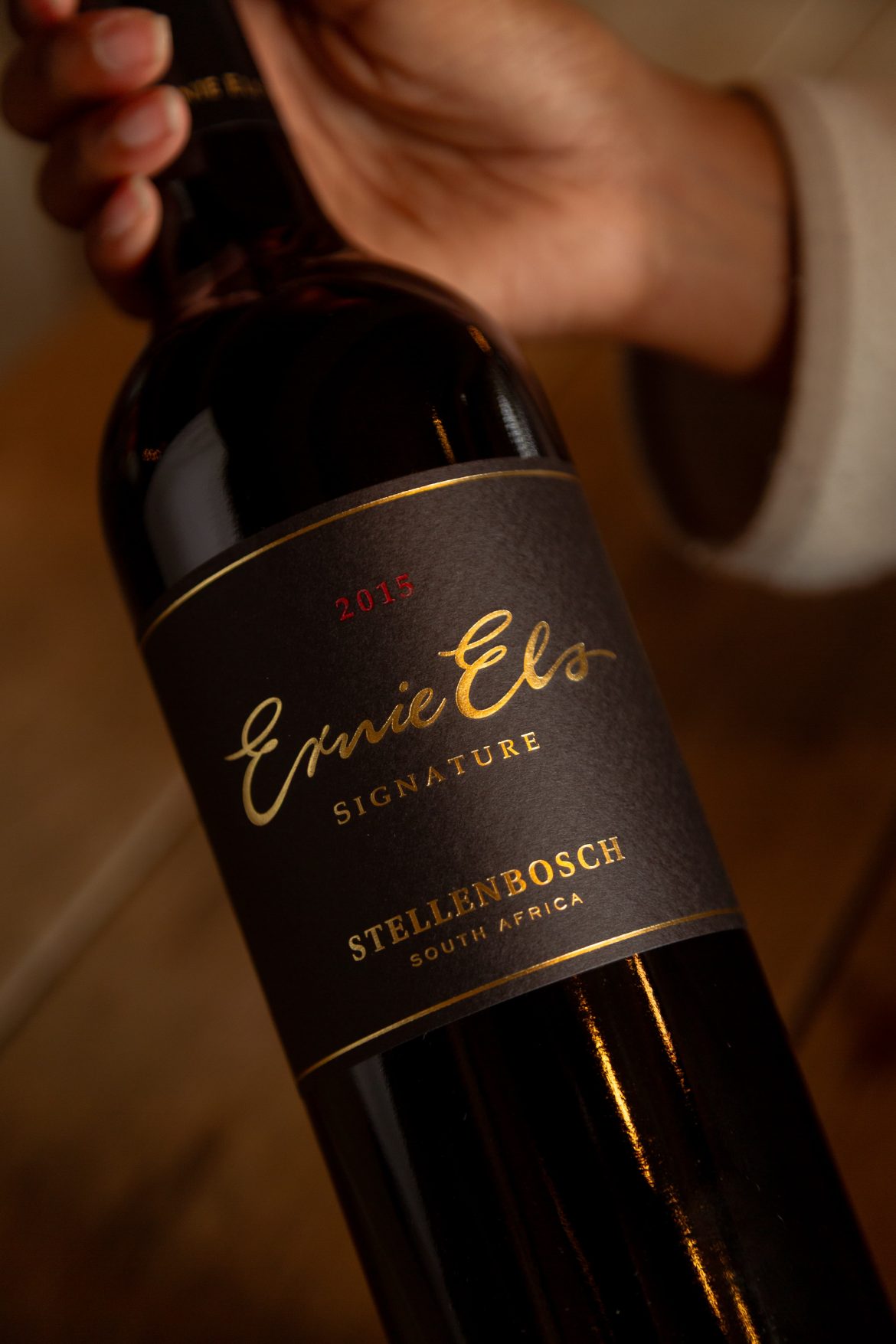In celebrating its 25th anniversary, Ernie Els Wines shows how old wines are the breadcrumbs that tell the story not only of seasons, but cellars too. Clifford Roberts reports on the Stellenbosch winery’s 10-year release program.
We’re seated at the end of a dark tunnel, underground, when my companion says: “I’ve asked myself the question: where are we going?”
We’re reflecting on the past, but he’s talking about the future. I respond: we seem to be doing this a lot lately, as a species, I mean. Trying to make sense of the speed with which the world is changing, knowing what’s real and what isn’t.
An outsider happening in on the two of us, where we sit amid dusty, bottle-lined shelves of the estate’s Wine Library, may wonder what this has to do with the subject at hand. It has been a quarter of a century since Ernie Els Wines saw the birth of its first wine.
Cellarmaster Louis Strydom, who made that very first bottling in 2000, believes our conversation has everything to do with prevailing sentiment. In fact, it’s at the very heart of the estate’s groundbreaking 10-year wine release program.
“How do you prove the authenticity of what you are doing? The authenticity comes from the ability of the wine to improve with time, to age,” he says.
The journey began after the establishment of Ernie Els Wines’ own cellar on north-facing slopes of the Helderberg Mountain, but that wasn’t enough. “We wanted people to feel the heritage of the property; to witness the evolution at a profound level,” says Louis.
Opening the maturation cellar to visitors and creating appropriate displays could only take you so far. Following the re-opening of the premises to visitors in 2020, a new path was forged.
“When we reworked the winery, we built our Vinothèque to showcase the ability of our wines to mature. For that, we needed to have enough wine put away so somebody could walk straight in and buy an older vintage, aged under perfect conditions.”
Boosting its message in 2023, the Ernie Els Signature 2013 was the highest rated in that year’s annual 10-Year-Old Wine Report tasting by Wine magazine. Highlighting the achievement, the publication undertakes the show because “one of the most important measures of great wine is that it should be age-worthy, that is it should become more pleasurable and more interesting to drink.”
Many wine farms hold newly bottled wines back from immediate sale, but only in limited numbers and only available exclusively. The Ernie Els Wines 10-year release program used this as a point of differentiation.
“It’s a massive investment to put all this wine away – for both the Signature and Major series – for over 10 years, but we wanted to put the heritage of Ernie Els Wines into the hands of the guests who don’t know the wine, to see the potential of the farm.”
He adds: “In wine, tasting is believing.”
And tasting is more than a cursory experience. Older wines are about moments, Louis says. “I love the reflection of a time in my life associated with a particular vintage of older wine. Connecting a personal experience to that bottling of sunshine takes you on a very personal journey. It makes it real.”
There’s an additional level to this, which is equally relevant and comes down to winemaking craft.
In general, not all wines are made to age well. Many top wines are early-drinking specimens while older vintages bring broader dimensions to a wine’s intrinsic character and the experience of its consumption. The relative scarcity of older wines also makes them the best-performing investments of the category.
Determining a younger or older style starts early on and relies on amongst others, the point at which grapes are harvested; techniques applied in the cellar; and, the choice of barrels used. “There is a fine line between age-ability and drinkability,” says Louis. “We talk about it in the cellar a lot.
“Age-ability means you have tannin structure because tannin is your natural preservative, but it is a little harsh, a little drier, and less pleasant when you drink the wine early. Drink-ability means less tannin, soft fruit and a lot of primary fruit, but the wine has nothing to look after it beyond five years of age.”
The evolution of style across the industry in general, has been away from the bold, high alcohol specimens of the 1980s that generally gave them an ability to age. So too at Ernie Els Wines, which has stepped up demands on the cellar in the creation of flagship wines that – in addition to being part of a broad portfolio – fulfil a role that blends the two poles.
“If someone is going to invest in a bottle of wine, the first question they have is: how long can I keep it? Earlier, it was always easy to throw out an answer of 10 or 20 years. It’s still true today, but the jury will be out because, you know, you can’t buy time. Time is given to you, and you need to be patient,” says Louis.
“All we have at Ernie Else Wines is our past that we’ve harnessed to be a kind of testament to our future, which is what drives the philosophy of the 10-year maturation program.”
ALSO SEE: Ernie Els Wines: A 25-year journey of excellence
Written by Clifford Roberts.
Photos: Kyra Welch
Video: Naseer Samuels

